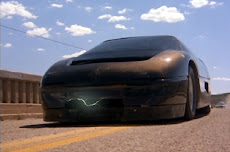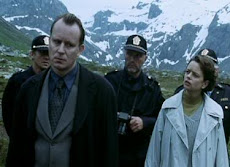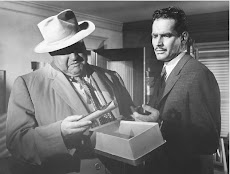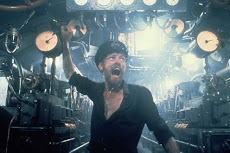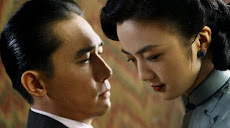I wanted to like Drive. I still want to like Drive. I just don't see it working out.
 There is a certain timelessness about films featuring a nameless driver. Clive Owen broke into American films in large part because of his role as the Driver, or "The Hire," in the BMW Films, a series of short films released almost a decade ago. (My favorites are Guy Ritchie's and Tony Scott's, both of which make very creative use of pop stars as actors.) Even just providing a good car chase with a named driver (or drivers)--as seen in Bullitt (1968), The French Connection (1971), Ronin (1998), and Gone in 60 Seconds (and this is one of the few films where I appreciate the original and the remake)--can make an otherwise decent film iconic.
There is a certain timelessness about films featuring a nameless driver. Clive Owen broke into American films in large part because of his role as the Driver, or "The Hire," in the BMW Films, a series of short films released almost a decade ago. (My favorites are Guy Ritchie's and Tony Scott's, both of which make very creative use of pop stars as actors.) Even just providing a good car chase with a named driver (or drivers)--as seen in Bullitt (1968), The French Connection (1971), Ronin (1998), and Gone in 60 Seconds (and this is one of the few films where I appreciate the original and the remake)--can make an otherwise decent film iconic.Drive features two great car chases, with Ryan Gosling's nameless driver at the wheel. Both of these chases win points for realism and the second sets a new bar for intensity. Especially with accurate use of sound (namely, making it cringingly loud when it needs to be), director Nicolas Refn achieves energy that even the back-and-forth of machine guns (even rocket launchers) in Ronin cannot match.
This does not just apply to the car chases. The first gunshots that ring out in Drive are, with theater surround sound, as loud as real gunshots. Sound also defines what I really loved about Drive, namely its score by Cliff Martinez and soundtrack including electronic artists Kavinsky and College. Featuring a distinctly '80s font in the title sequence along with Kavinsky's "Nightcall" is an effective homage to the work of Michael Mann and William Friedkin: as a fanboy of both (especially To Live and Die in LA and Manhunter), of course I loved this.
But remember what I said about making an otherwise decent film iconic with a good car chase? Well, it's the "otherwise decent" part that's missing here.
It took me awhile to warm up to Ryan Gosling, namely because of an independent film called The United States of Leland from 2003. Admittedly, looking down his filmography on IMDb I have not seen many of his films other than largely forgettable (dues-paying?) fare like Murder by Numbers (2002). This does not mean I don't respect him: he was outstanding Crazy, Stupid, Love earlier this summer. His talent, though, does not include what I call "the meditative visage."
In my last post I gave credit to George Clooney at the closing of Michael Clayton. In that scene we're privy to a man absorbing all he's just been through (including an attempt on his life) for a good few minutes of silence (with a score behind it, of course). And it works. In one of my favorite movies that I don't watch often enough, The Limey, Terence Stamp spends much of the movie in silence, the look on his face conveying a character carrying too much remorse, guilt, and other baggage. The audience shares it with him. Sofia Coppola is regarded (or should be) as the master director of the meditative visage: she treated us to ensembles Bill Murray and Scarlett Johansson in Lost in Translation and, more recently, Stephen Dorff and Elle Fanning in Somewhere. The characters in these films keep silence individually and with one another, and not only keep our attention but further evoke our sympathy, empathy and--somehow--understanding.
Gosling tries this in Drive, along with his sort-of love interest Irene, played by Carey Mulligan. To borrow a phrase, it's like watching paint dry. Gosling is a mysterious driver who's looking for more out of life. Irene got pregnant at a young age by a recently released convict who she does not love. That's. About. It. It's laughable and boring to watch these two stare at one another with somewhat-but-not-quite longing, and it happens again and again in far too many scenes. It doesn't look like they're carrying anything more than the desire to not start cracking up in front of the camera.
I don't remember much about United States of Leland other than far-too-long shots steadied on Gosling's face as he thinks things over. If this is only the second time Gosling has taken a shot at meditative vision, fine, but to me he's run out of ammo. He can do better than this--as can Carey Mulligan.
Much like character studies, what works and what doesn't is not going to be set apart by a formula, and that's why film making is more art than engineering. But if one is going to look for examples for pulling off meditative vision, Drive is one that screams what not to do.


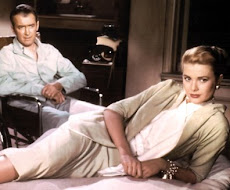_01.jpg)





